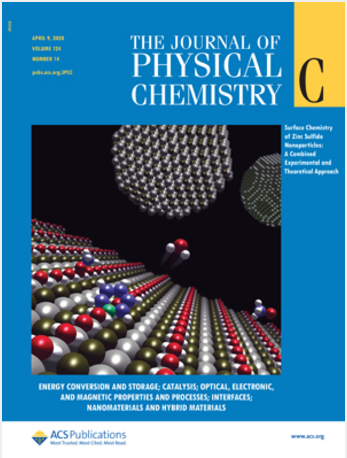基于微流体的金纳米结构与光学特性工程研究
IF 3.3
3区 化学
Q2 CHEMISTRY, PHYSICAL
引用次数: 0
摘要
金纳米星(AuNS)是具有结构可调光学特性的各向异性金纳米粒子。大多数合成方案依赖于多步骤程序和使用细胞毒性和/或强结合化学物质,这可能阻碍AuNS的应用。而利用HEPES合成AuNS克服了这些限制,使用生物相容性缓冲液作为形状导向和还原剂,得到的纳米颗粒是高度非均质和多分散的。在本文中,我们使用微流控芯片来操纵AuNS的形貌和光学性质,同时显著提高其单分散性。值得注意的是,通过调整微流体参数,包括有机相粘度、流速比和缓冲金比,该方案可以操纵纳米颗粒的生长机制,在无籽和种子介导的生长之间切换,而无需添加预合成的种子。这样的控制是不可能的一个锅台合成。我们的研究结果为定制金纳米颗粒的生长和形成提供了新的机会,同时显著提高了它们的单分散性。本文章由计算机程序翻译,如有差异,请以英文原文为准。

Engineering the Structure and Optical Properties of Gold Nanostars with Microfluidics
Gold nanostars (AuNS) are anisotropic gold nanoparticles with structure-tunable optical properties. Most synthetic protocols rely on multistep procedures and on the use of cytotoxic and/or strongly bound chemicals, which can hamper AuNS applications. While the synthesis of AuNS with HEPES overcomes these limitations by using a biocompatible buffer that acts as both a shape-directing and a reducing agent, the resulting nanoparticles are highly heterogeneous and polydisperse. In this paper, we use a microfluidic chip to manipulate the morphology and optical properties of AuNS, while significantly improving their monodispersity. Notably, by adjusting microfluidic parameters, including viscosity of the organic phase, flow rate ratio, and buffer-to-gold ratio, this protocol can manipulate the growth mechanism of the nanoparticles, switching between seedless and seed-mediated-like growth, and it does so without the need to add a presynthesized seed. Such control is not possible with one-pot bench synthesis. Our results provide new opportunities to tailor the growth and formation of gold nanoparticles while significantly improving their monodispersity.
求助全文
通过发布文献求助,成功后即可免费获取论文全文。
去求助
来源期刊

The Journal of Physical Chemistry C
化学-材料科学:综合
CiteScore
6.50
自引率
8.10%
发文量
2047
审稿时长
1.8 months
期刊介绍:
The Journal of Physical Chemistry A/B/C is devoted to reporting new and original experimental and theoretical basic research of interest to physical chemists, biophysical chemists, and chemical physicists.
 求助内容:
求助内容: 应助结果提醒方式:
应助结果提醒方式:


